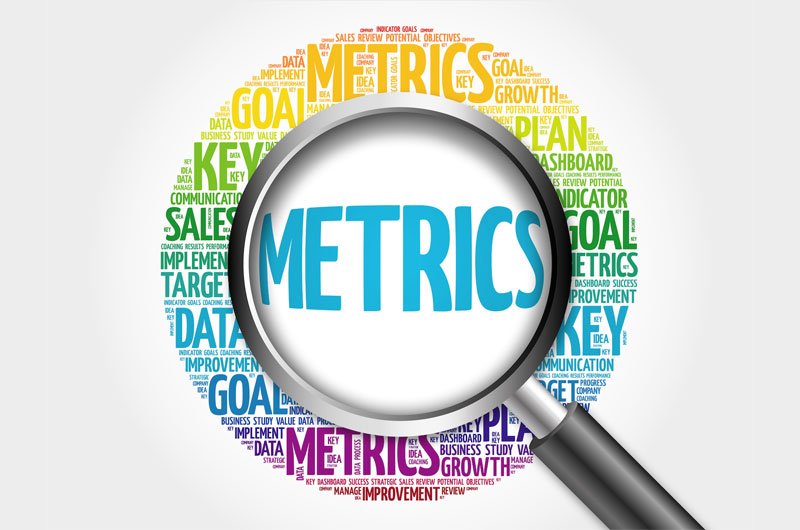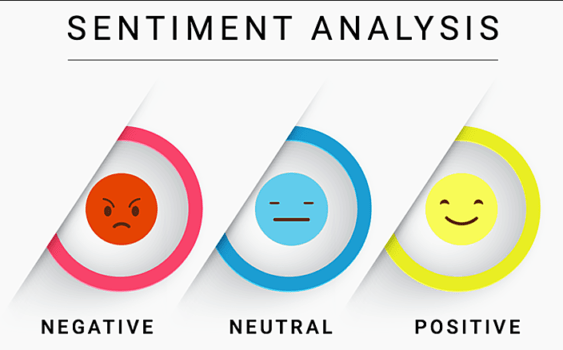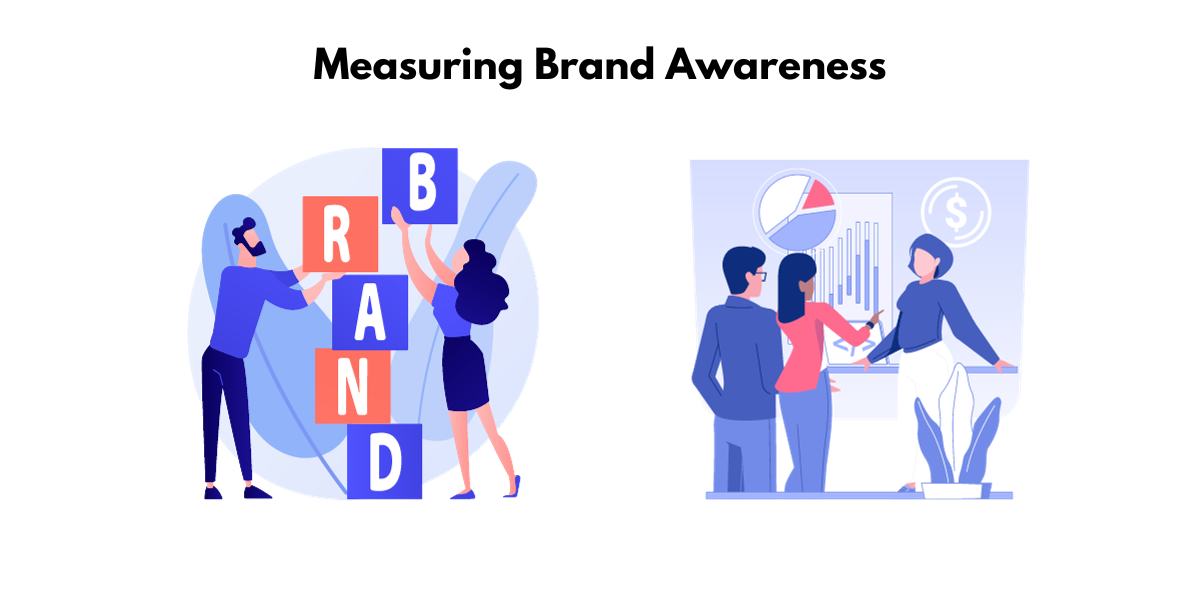How to Measure Brand Awareness
Measuring brand awareness is crucial in understanding how customers view your brand compared to your competitors.
It is essential to gauge how recognizable your brand is and how well customers can recall it when prompted.
You can effectively measure brand recognition and recall through surveying methods, such as in-person or electronic formats.
Additionally, by monitoring your brand awareness, you can gain insight into which strategies work best for you and where to focus future efforts.
With the right action plan, you can take the necessary steps to ensure your brand stands out from the crowd and is remembered.
What is brand awareness?
Brand awareness is the level of recognition and familiarity consumers have with a particular brand or product.
It measures the frequency people consider your products and services over your competitors, how frequently your brand ranks highly on search engine results, and how recognizable your marketing efforts are.
Establishing brand awareness is important when marketing and promoting your company and products, especially in the early stages of a business.
To build brand awareness, marketers should measure it frequently and implement strategies to increase brand recognition over time.

Why is it important to measure brand awareness?
Measuring brand awareness is important for any business to gauge its marketing efforts’ success and evaluate its effectiveness.
Brand awareness is essential for people to become familiar with a brand and purchase its products or services.
Measuring and tracking brand awareness metrics is important to identify weaknesses in a business’s marketing plan.
By measuring brand awareness, businesses can learn the following:
- how well their awareness campaigns are performing
- track customer satisfaction
- assess customer loyalty
- reach their target audience faster
- identify potential new customers
- evaluate marketing strategies and campaigns
- build brand awareness based on reliable data
- find ways to promote their content better
Knowing the brand awareness rate of a company, product, or service in the market can also help businesses accurately calculate their conversion rates during the buyer’s journey down the funnel.
As such, measuring brand awareness is critical to identify areas needing improvement and maximizing brand visibility.
How do you measure brand awareness internally?
To start, it’s important to get buy-in from internal stakeholders.
Gather the data you need to demonstrate ROI and point out areas for improvement in your benchmarks.
Be disciplined in tracking your success and measuring metrics such as branded keyword impressions and brand equity.
Additionally, create customer surveys to assess brand recall and recognition, use alternative survey tools to gain honest insights and benchmark metrics to track changes in brand awareness.
Lastly, measure share of voice to understand the proportion of conversations concerning your industry centered around your brand.

Real-time vs. Point-in-time
Real-time brand awareness measurement is a method of continuously monitoring the performance of campaigns and marketing efforts by keeping an eye on Key Performance Indicators (KPIs).
This allows any mistakes to be caught quickly and strategies to be pivoted as needed.
Point-in-time brand awareness measurement, on the other hand, is the method of reviewing brand awareness KPIs at specific intervals, such as quarterly or yearly, or after the end of a certain campaign.
This method is useful for reflecting upon past actions, campaigns and strategies, and understanding the brand awareness status.
By using both methods together, brands can keep up-to-date with changes in brand awareness, learn from mistakes, and build a strong, data-driven strategy.
Real-time brand awareness data provides greater accuracy to the questions brand awareness asks of the target audience, with pinpoint accuracy.
It also allows for more sensitivity to nuanced changes.
Ultimately, understanding and measuring brand awareness can help brands develop effective brand awareness strategies.
Point-in-time data paints a picture of the past
Point-in-time data paints a picture of the past by looking at brand awareness KPIs at specific intervals, such as quarterly or yearly, or after the end of a certain campaign.
This helps to reflect upon past actions, campaigns, and strategies and gives an understanding of a brand’s awareness status.
By benchmarking against historical data, it is possible to identify natural peaks and troughs and any anomalies in brand awareness.
By tracking the share of voice over time, it is possible to understand better how the brand is performing against its competitors.
Continuous real-time data helps you anticipate the future
Continuous real-time data can provide invaluable insight into how your target audience perceives your brand, helping you anticipate future trends.
By collecting real-time data that is constantly updated, you can quickly identify small changes in brand awareness and use them to adjust your marketing strategies in response.
This allows for greater sensitivity to nuances in your data and helps you react to trends before they become widespread.
On top of this, using real-time data instead of legacy data makes it easier to identify peaks and troughs in brand awareness.
This helps you to be proactive and take action before shifts have occurred.
This data also allows you to compare different campaigns and understand the effects of different strategies on your brand.
You can then use this data to inform your future campaigns and ensure they are as effective as possible.
Finally, real-time data helps you measure your campaigns’ impact and make better future decisions.
By monitoring your brand’s performance continuously, you can determine which types of communication are most effective in increasing brand awareness and which ones you should discard.
With this knowledge, you can anticipate potential changes in the future and position your brand in the best way possible.

What are the 3 types of brand awareness?
Brand awareness is more than just recognition or recall of your brand.
It is about developing a deeper knowledge of your product or service as the ideal solution for your customers’ needs.
To achieve this, brand awareness campaigns combine brand elements, including your business name, logo, visuals, messaging, products, and defining company characteristics.
These components, along with brand experience, brand loyalty, and word-of-mouth referral, all contribute to brand equity, which is the financial value of the brand.
The key components of brand awareness are brand recognition, recall, and perceived quality.
Public brand awareness
Public brand awareness is the recognition of a brand among its target audience.
It measures how well consumers are familiar with a brand and how likely they are to remember it when purchasing.
Brand awareness involves several key characteristics, such as brand recall, recognition, and perception.
Brand recall is how likely a consumer is to remember your brand without any leading information.
Brand recognition is how familiar the consumer is with your brand and how well they recognize it.
Brand perception is how the consumer feels about your brand based on criteria like customer service, quality, value, features, and the sales process.
Establishing and building brand awareness is essential to any successful marketing strategy.
Brand awareness among target audiences
Brand awareness among target audiences differs from brand awareness among consumers in several ways.
Brand awareness among target audiences focuses on the specific demographic’s familiarity with the brand.
In contrast, brand awareness among consumers determines how well the entire population knows the brand.
Brand awareness among target audiences also considers factors such as customer service, quality, value, features, and the sales process, which are not typically considered when measuring consumer brand awareness.
Additionally, brand recall, or top-of-mind awareness, measures how likely a customer is to remember a brand without any leading information, which is important when measuring brand awareness among target audiences.
Finally, brand awareness surveys for target audiences are typically more specific, such as a wine company surveying only wine drinkers of a certain type or a local brewery surveying beer drinkers in a specific geographic region.
Social media brand awareness
Social media is an invaluable tool for businesses seeking to increase brand awareness.
By leveraging social media platforms, businesses can track and measure their followers, likes, shares, and comments, allowing them to gain insights into how customers interact with their brand.
Additionally, businesses can use Google Analytics to track how many visitors are coming from social media and use social listening tools to measure mentions of their brand or logo.
The key performance indicators for brand awareness on social media include the number of impressions, likes, shares, and comments.
By tracking these metrics, businesses can determine if their campaigns resonate with the right people and how interested people are in their products or services.
Moreover, businesses can use carousel social media ads–more engaging than static ads–to increase engagement and boost brand awareness.
Overall, social media is a powerful tool for businesses to gain insights into brand awareness and engage with customers.
By tracking the number of impressions, likes, comments, and shares, businesses can better understand how their customers interact with their brand and use the information to create more effective marketing campaigns.

10 key metrics to help measure brand awareness
Measuring brand awareness is challenging, but businesses must understand their marketing efforts’ impact on their target audiences.
Understanding how well your brand is recognized will help you target your campaigns more effectively and ensure your company’s message gets across.
To make the most of your brand awareness efforts, it is essential to measure the right metrics.
Let’s discuss the 10 key metrics that can help you measure brand awareness and ensure your campaigns drive the desired results.
1. Brand mentions
Mentions can be a great way to measure brand awareness, as they can tell you about your brand recognition, recall, reach, and engagement.
By tracking the times your brand is mentioned online, you can better understand the conversations about your brand and any changes over time.
Additionally, by understanding who is talking about your brand, how often they mention it, and who comprises their audience, you can make more informed decisions about your brand awareness campaigns.
Furthermore, by using automated software to constantly scan the internet for mentions, you can simplify finding and applying these mentions to your current brand awareness campaigns.
By considering the reach of the mentions, you can see how much of your brand message is being seen by your target audience.
Sentiment analysis tools are also essential in understanding the sentiment of the mentions so that you can measure how people feel about your brand, which is essential to know if your campaigns are effectively conveying the right message.
These elements can provide valuable insights into brand awareness and your campaigns’ success.
2. Brand search traffic
Brand search traffic is an important metric to measure brand awareness, as it reflects how many people search for information about a particular brand.
We can accurately understand how well-known a brand is by tracking the number of searches for a particular term over time.
This allows us to measure the success of brand awareness campaigns and compare the relative popularity of different brands in different markets or regions.
With the help of Google Analytics, it’s easy to track the number of people who type in a brand’s URL or use a browser bookmark.
We can measure the increase in website sessions for new versus returning users to determine our brand awareness campaign’s success.
Additionally, tools such as Google Trends and Google Ads can provide valuable data about the search volume for our brand, helping us to understand further and refine our brand awareness campaigns.
3. Social media presence
Social media presence effectively increases brand awareness and tracks key performance indicators (KPIs).
Tracking metrics such as impressions, likes, shares, comments, and more allows marketers to gain insights into their target audience and how they respond to the brand.
Tracking follower counts, post shares, and mentions or branded hashtags can help marketers measure their brand awareness over time.
However, these metrics provide limited insight into how well people engage with the brand.
Social media tracking tools, such as Google Analytics, can provide data on how many visitors are coming from social media, further proving that brand awareness is growing.
Social listening, such as BrandWatch, can also help marketers measure sentiment and share of voice to assess overall brand awareness.
Through social media presence, marketers can measure their brand awareness and track their KPIs but need to use tools to understand better how their campaigns resonate with their audiences.
4. Website traffic
Website traffic is an effective way to measure the success of a brand awareness campaign.
Increases in direct traffic, unique pageviews, and blog referral sources can be tracked using tools such as Google Analytics to help determine if the campaign has a positive impact.
An increase in direct traffic indicates that more people are becoming familiar with the brand. In contrast, an increase in unique pageviews and blog referral sources can be attributed to people discovering the brand through digital marketing campaigns.
By tracking website traffic, it is possible to gain valuable insight into the overall success of a brand awareness campaign and make adjustments as needed.

5. Social media engagement
Social media engagement can help measure brand awareness by tracking followers, post shares, likes, comments, and other metrics.
By understanding how many people are engaging with your content, you can get an idea of the reach and impact of your brand.
Tracking sentiment towards your brand using social listening tools or sentiment analysis can further inform your brand awareness.
By keeping track of new followers and understanding which content resonates the most with your audience, you can effectively measure the success of your brand awareness initiatives.
6. Website conversions
Website conversions can be a helpful way to measure brand awareness.
When customers visit a website due to a brand awareness campaign, it is important to track the conversions to understand to what extent the campaign was successful.
By tracking conversions, it is possible to understand how well the brand message resonated with the target audience and adjust the strategy accordingly.
For example, if a campaign resulted in increased website sessions for new users, the campaign successfully introduced the brand to new people.
Similarly, increased organic search traffic can signal that more people discover the brand through digital marketing campaigns.
By understanding how conversions are affected by brand awareness campaigns, marketers can better understand the effectiveness of their efforts.
7. Social media followers
The number of social media followers can be used to measure brand awareness, as the more followers a brand has, the better its brand awareness is.
This is because tracking the number of social media followers is one of the most straightforward ways to measure brand awareness.
In addition, often posting useful content and different types of content can help attract good engagement and increase the brand’s social media reach.
Furthermore, monitoring the number of likes, comments, and shares of a brand’s posts can help determine brand awareness.
With the help of social listening tools, brands can also measure the sentiment towards their brand and determine the share of voice.
These metrics can help determine how successful a brand’s efforts increase brand awareness.

8. Brand sentiment
Measuring brand awareness can be greatly aided by analyzing brand sentiment.
By assessing the sentiment of conversations related to the brand, it can be determined if people associate the brand with positive or negative emotions.
This can provide insight into the level of brand awareness and what people like and don’t like about the brand.
Measuring the context of these conversations can also provide insight into specific brand elements that people are drawn to.
Also, studying how customers think of the brand compared to its competitors and whether they recognize it in certain situations can determine how effective the brand’s marketing strategy is.
Surveying customers directly is also an effective way to gauge brand awareness.
By crafting customer surveys to assess brand recall or unprompted brand recognition, brands can gain valuable insight into how customers found them and their sentiment towards the brand.
By understanding customers’ opinions and feelings, brands can gain actionable metrics on their brand awareness.
9. Brand alignment
The alignment of a brand with key metrics can significantly affect brand awareness measurement.
When the right metrics are chosen, it can reveal a lot about how well a brand is performing in terms of brand awareness.
It can also demonstrate how effectively a brand’s marketing plan increases brand recognition and trust.
By paying attention to the right brand awareness metrics, it can help to gain a better understanding of how all of the marketing strategies are working together to generate success.
When key metrics are aligned with a brand’s objectives, it can provide valuable insights into the marketing strategy’s effectiveness and ultimately help increase brand awareness.
10. Brand monitoring tools
Brand monitoring tools can be used to measure brand awareness.
These include surveys, website traffic, search volume data, and social media listening tools.
These tools can provide insights into the volume of mentions, engagement levels, social media reach, the sentiment of conversations, and sharing of voice.
Additionally, surveys can provide an understanding of how people hear about a brand, while website traffic can indicate changes in brand awareness.
Search volume data can help track how many people are searching for a brand name over time, while social media analytics tools can help to monitor conversations about a brand.
Lastly, Qualtrics Brand Tracker can offer advanced analytics and brand intelligence, helping to increase brand awareness.







